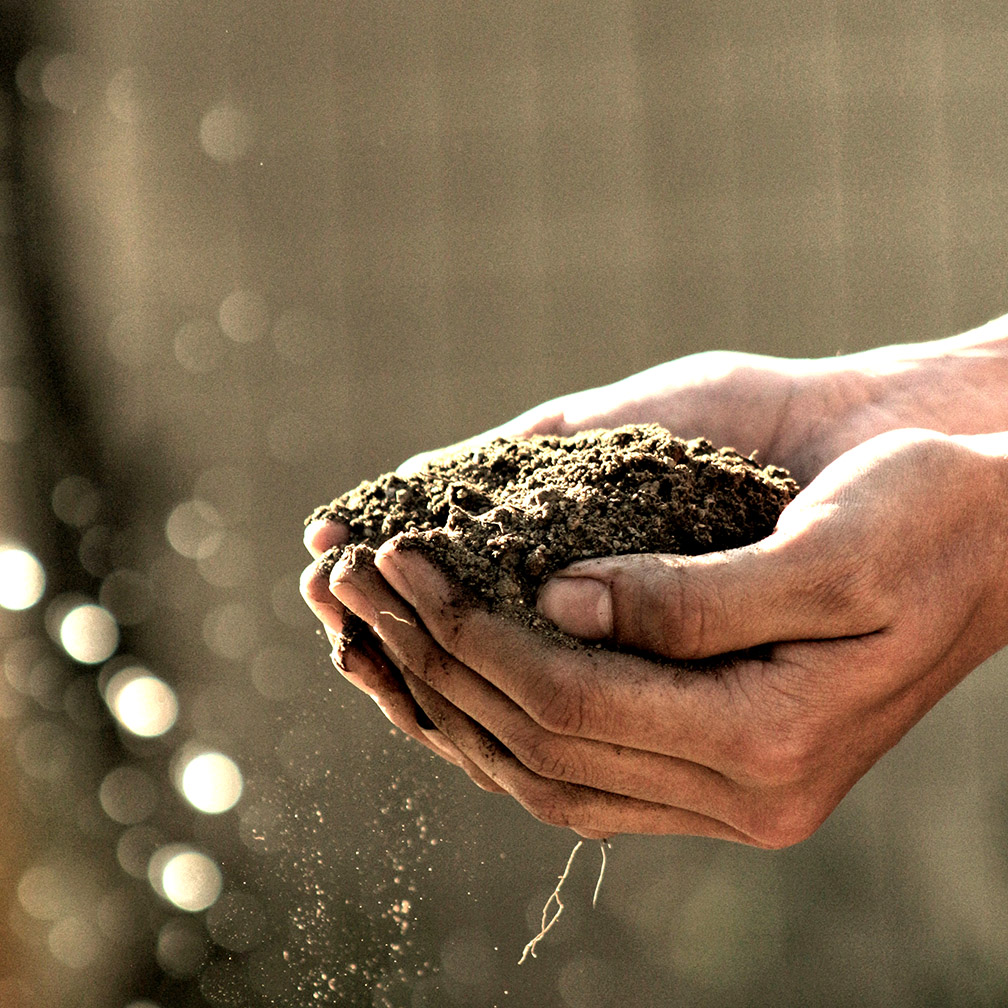
The mid Rio Grande lies in the northernmost part of the Chihuahan high desert. With climate change, there will be less predictable rainfall and warmer temperatures leading to greater desertification. Desertification is magnified by urban sprawl. While regenerative agriculture has been talked about in many circles for years, interest is increasing, and its various components are being studied and applied both separately and as a whole. Decreasing greenhouse gases by limiting use of oil and gas is necessary to tackle climate change, but this will not be enough. Carbon has to be sequestered as well. In the US, agricultural practices account for 10% of greenhouse gases, so by replacing chemical fertilizers, heavy dependence on machinery, etc. and instead adopting regenerative agricultural practices, we can increase sequestration of carbon. Regenerative agriculture is a key practice. Here are some of the best practices.
Building healthy soil is a critical starting place. Microorganisms such as bacteria and fungus play an important role as they do all the things needed by soil, including pulling in nutrients. In the past their role was often ignored. This is where adding organic matter in the form of compost is important.
Minimizing disturbance to the soil and plant life is called ‘no till agriculture.’ This allows existing root systems to grow deeper and continue their sequestration of carbon. Microorganisms are not disturbed. This requires modifying the practices of plowing, or ‘turning over your garden.’

Keeping soil covered with plant life decreases heat and can add nourishment, especially if nitrogen-fixing legumes are used. They may be planted seasonally or between rows which then can be rotated. On open range, planting heat-tolerant grasses for forage is another way to keep soil covered when combined with herd rotation or limited herd size.
Maximizing biodiversity or intercropping has been an indigenous practice around the world. This decreases insects and the need for insecticides, can fix nitrogen during the growing season, provides shade for other plants who need it, and better holds soil in place from wind and water events.
Integrating animals including livestock and birds into land management provides organic matter and decreases insects. This practice has also been done for millennia in places such as the Iberian Peninsula. There it is called silvopasture and is ranked ninth globally in importance for decreasing carbon. Its overall effectiveness in carbon reduction is greater than changing to electric vehicles and LED lighting. It has a huge economic benefit to farmers as well.
New Mexico has six sub climates with different soils, precipitation and temperatures. What is being tried here?
A large research project is being implemented by NM State University (NMSU) Extension Services. They are using different regeneration strategies at their 12 experimental stations across New Mexico. Some examples of their research include: the agricultural station in Clovis experimenting with desert-adaptive cover crops for farms and rangelands; the Corona Range and Livestock Research Center looking at growing more native grasses and legumes alongside cattle operations; the Los Lunas research station studying different plant species for use in urban landscapes and vineyards; and the Mora research station focused on forest management and reforestation.
Stabilizing the watershed is an important piece of restorative agriculture. According to research done by NMSU researchers, acequias help to recharge groundwater. The Albuquerque Bernalillo County Water Utility Authority is recycling wastewater to recharge the aquifer, but it is hard to find specific information about their monitoring wells. Where possible, wetlands are being increased. Green stormwater infrastructure is being promoted by Arid LED and Bernalillo County using, among other things, principles of permaculture.
Not-for-profit organizations such as Quivira Foundation have been working on a variety of sustainable range management practices for years. NM Healthy Soil Working Group’s niche is in advocacy and education, and they have a well laid-out website with upcoming regenerative agriculture workshops. American Friends Service Committee (AFSC) has been working with small farmers for years and among other things, trying to extend small farmers growing season and diversifyng income streams. Chispas Farm is one example of a small local farm adopting regenerative practices and has an informative website. The Traditional Native American Farmers Association works to support family oriented scale farming and the preservation of heirloom seeds.
Sequestration of carbon using regenerative agriculture practices will take everyone working together, be it on an urban lot, small farm, or ranch.
Information for this article is from NMSU as reported in the Albuquerque Journal (10/18/21), AFSC, Quivira Foundation, Sandia and Santa Ana Pueblos, NM Healthy Soil Working Group, Office of State Engineer Fifty Year Plan.
.

